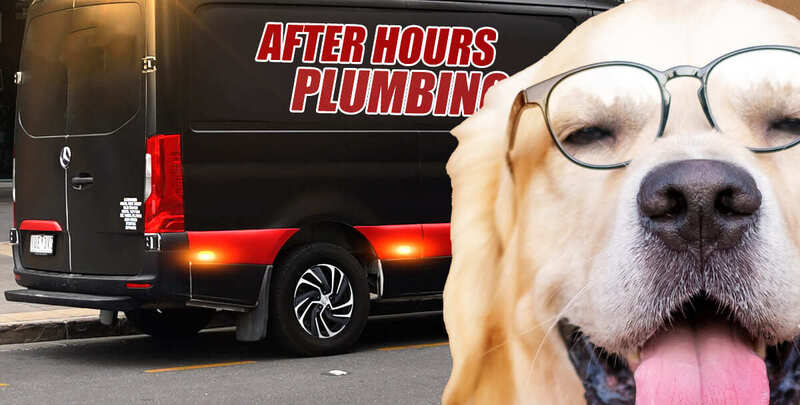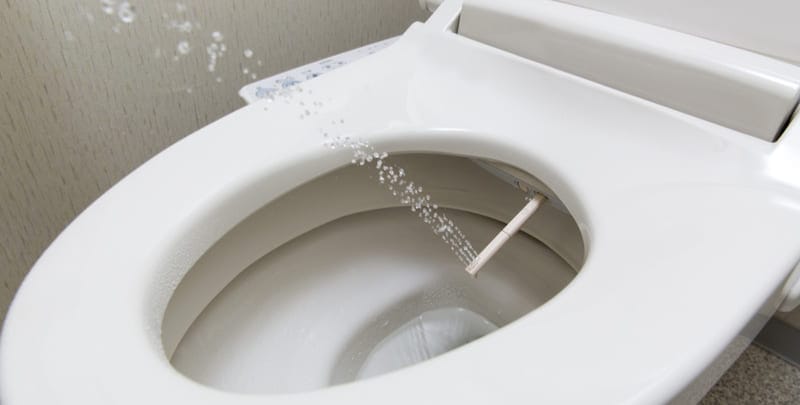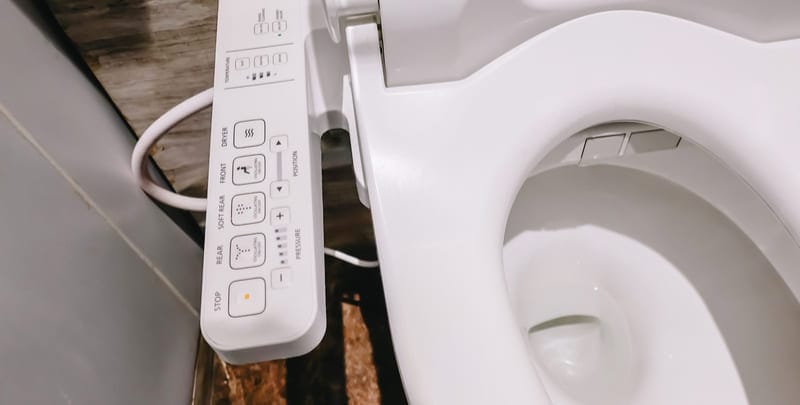Are Bidets Better Than Toilet Paper?

In recent years, Australians have become increasingly open to the idea of using a bidet toilet seat rather than traditional toilet paper.
With a growing consciousness of the environmental concerns of toilet paper as well as the hygiene benefits of bidet toilet seats, more Australians than ever are considering making the switch.
Bidets offer a range of advantages, from improved cleanliness to long-term cost savings. As we explore this topic, we’ll delve into the workings of bidets, compare their benefits to using toilet paper, and consider their environmental impact. Understanding the various points of consideration around the question “Are bidets better than toilet paper?” will help you make an informed decision about your bathroom practices.
How Do Bidets Work?
So what is a bidet and how does it work?
Bidets are bathroom fixtures designed to enhance personal hygiene by cleaning the genital and anal areas after using the toilet. They operate by directing a stream of water to the targeted area, providing a more thorough and gentle cleaning compared to wiping with toilet paper. There are different types of bidets, including:
- bidet toilet seats
- bidet attachments for your existing toilet bowl
- portable bidets
Each caters to various needs and preferences.
Most bidets function by releasing a spray of warm water, often with the ability to adjust water temperature and pressure. Advanced models may include features like heated seats, oscillating nozzles, and remote controls to improve user comfort and convenience. These enhancements help ensure a more effective cleaning process, reducing the risk of irritation and infections.

Hygiene and Health Benefits
Bidets provide a significant improvement in personal hygiene by providing a thorough cleaning that surpasses the ability of traditional toilet paper or wet wipes. The water stream effectively removes bacteria and residue. This reduces the risk of infections and irritation and ensures that users stay clean and fresh. It is particularly beneficial for preventing conditions like urinary tract infections and anal fissures, which can result from inadequate cleaning.
Using a bidet also offers a gentler and more comfortable experience compared to wiping with dry paper. The water spray cleans the area without causing abrasion, which can be a concern with repeated use of toilet paper. This is particularly advantageous for individuals with sensitive skin or those who suffer from haemorrhoids.
From a broader health perspective, bidets support better hygiene practices, which can lead to fewer health issues over time. They are especially useful for the elderly and people with limited mobility, as they reduce the physical effort required for cleaning.
Toilet Paper vs Bidet: The Environmental Impact
Bidets offer a significant positive effect on the environment compared to traditional toilet paper. Yes, recycled toilet paper can be a good thing. However, the production of toilet paper involves extensive deforestation, high water consumption, and significant energy use, all of which contribute to environmental degradation. By reducing the reliance on paper products, bidets help preserve trees and decrease the overall waste generated from disposable hygiene products.
The initial investment in a bidet toilet seat is offset by long-term environmental and financial benefits. Bidets use a minimal amount of water for cleaning, which is significantly less than the water used in the production of toilet paper. Additionally, modern bidets are designed to be energy-efficient. Even with features like heated seats and adjustable water temperature, it makes them a sustainable choice.
Moreover, the reduction in paper towel and toilet tissue waste means fewer products end up in landfills, decreasing pollution and the strain on waste management systems. A bidet provides a hygienic and eco-friendly solution that not only promotes personal hygiene but also supports a healthier planet by reducing carbon emissions and environmental impact.
User Experience and Convenience
Bidets provide an enhanced user experience compared to traditional toilet tissue. The gentle water spray ensures a thorough wash, reducing irritation and improving comfort, particularly for individuals with sensitive skin or conditions like haemorrhoids. This method of cleaning can also prevent urinary tract infections and promote better overall hygiene.
Modern bidets offer a range of features that add to their convenience. Many models include:
- adjustable water temperature
- a heated seat, and
- various water pressure settings
All of which you can control easily by remote control.
Installing a bidet is typically straightforward and can often be done without major modifications to the existing plumbing fixture. Although the initial cost may be higher, the long-term savings on paper towels and toilet paper and the added convenience make bidets a practical investment. The improved user experience and ease of use make bidets a no-brainer to add to any bathroom.

Consider if a Bidet Toilet Seat is Right for Your Home
So as we wrap up the toilet paper vs bidet debate, let’s take one last look at the numerous advantages that bidets offer over traditional toilet paper or wet wipes. They provide superior hygiene, help prevent infections, and are gentler on the skin. The environmental benefits, including reduced waste and lower carbon emissions, make bidets an eco-friendly choice for modern households.
Although the initial investment in a bidet may be higher, the long-term cost savings and improved user experience justify the expense. With various models and features available, there is a bidet to suit every personal preference and bathroom setup. Adopting a bidet is a practical and sustainable decision that enhances personal hygiene and contributes positively to the environment.
Please note: Thanks for reading our blog “Are Bidets Better Than Toilet Paper?” This information is provided for advice purposes only. Regulations differ from state to state, so please consult your local authorities or an industry professional before proceeding with any work. See After Hours Plumbing’s Terms & Conditions here.
